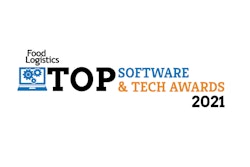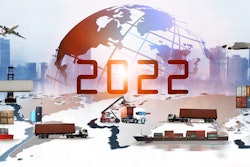
Supply chains have been strained by the growing demand for online retail, delivery and direct-to-consumer brands, but the challenges have gone into overdrive amid a series of black swan events. The world has yet to recover from the supply issues introduced by the Coronavirus disease (COVID-19), and the chip shortage continues to impact a number of sought-after products. When container ships finally arrive at U.S. ports, many are forced to wait around until they can be unloaded.
The problems were severe enough to prompt an agreement between the White House and the Port of Los Angeles, which now employs a 24/7 operational model to keep up with demand. This will hopefully improve deliveries in time for the holidays, but retailers and consumers alike are already facing unexpected hurdles. Many consumers have tried to compensate for shortages and possible delays by shopping well ahead of Black Friday. A report by Oracle found that as many as 52% of consumers began their holiday hunt in October. Retailers have done the same – some started shopping for turkeys, nutmeg and cinnamon this past February, knowing that if they didn’t shop early, they might not be able to meet demand nine months later.
While these actions may reduce the pain points felt by a strained supply chain, suppliers are also grappling with the challenges brought on by the on-time and in-full (OTIF) supply chain metric. OTIF is not a new concept – in a survey by Zipline Logistics, all retail buyers (100%) said that timeliness impacts their willingness to work with a particular vendor. Nearly three-quarters (73%) have gone as far as ending a vendor relationship due to delivery issues. But, Walmart’s OTIF requirements, for example, expect shipments to be 98% filled on-time, and if a supplier fails to comply, it may receive a fee equal to 3% of the cost of goods.
As challenging as this sounds, the demands are not impossible to meet. By using the right enterprise resource planning (ERP) technology, organizations can stay on top of retailers’ growing demands and improve their ability to deliver products on-time and in-full.
Solving OTIF challenges
With inflationary pressures encroaching on revenue goals, businesses are repeatedly faced with a difficult dilemma -- endure lower profits or pass the cost onto consumers. Manufacturers simply cannot afford to let additional expenditures reduce their earnings.
Like it or not, supply chain struggles continue to plague retailers and consumers, who may not be able to get the products they want, when they want them. Some retailers have responded to these issues by reimplementing item limits, but that is a temporary stopgap that does not in any way solve the overall problem. They may also look to implement stricter OTIF policies to nudge suppliers along.
This may sound unreasonable, but manufacturers need to find a way forward. The solution is not in 24-hour operations, which is not realistic or sustainable long-term, nor can it be solved by hiring more drivers. With an ongoing shortage of talent, supply chains can’t hire their way to victory, and even if they could, delivery problems would persist.
Using the best technology
In addressing any challenges put forth by retailers enforcing strict OTIF metrics, manufacturers must consider more than the shipping process. The reality is that supply chains cannot deliver products on-time and in-full without first addressing the root causes of the problem, many of which occur at the manufacturing level. If materials are not properly managed – if ingredients or components cannot be easily traced or stocked – manufacturers will struggle to fulfill their OTIF obligations with any retailer.
Businesses can overcome these challenges by relying on data-driven ERP technology that allows them to better manage their processes. They need forecasting, supply and demand and warehouse management tools they can count on to deliver a clear picture of their operations at all times.
Embracing a single source of truth
OTIF is a challenging metric to hit month after month, so manufacturers need to be able to clearly communicate with warehouses and transportation partners to ensure they have the capacity to meet their needs. Manufacturers also want to know that their deliveries will be made on schedule.
They can certainly improve their situation by working with a diverse selection of carriers, shopping around not only for the best rate, but also for the highest level of reliability. Order tracking is also critical – without real-time visibility into where orders are and when they’ll arrive, manufacturers will struggle to keep up.
But, not all technologies are created equal. Manufacturers that juggle independent software systems to run their business expose themselves to vulnerabilities around accuracy and speed. What manufacturers need is a single source of truth with all data in one place – a technology that alleviates the challenges they face from OTIF or any other metric or expectation.
Building the best supply chain possible
Supply chain pressures will hopefully ease in the coming year, but the volatility – caused by specific shortages, unanticipated demand or a black swan event – will likely remain. Manufacturers cannot wait for things to get better on their own, nor should they ignore the expectations set forth by retailers. To keep up with their demand – and in turn, consumer demand – manufacturers need ERP technology designed to help overcome their challenges and build the best supply chain possible.



















